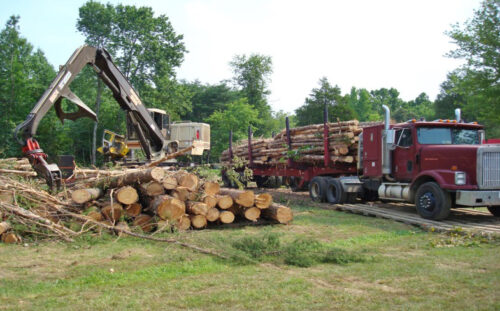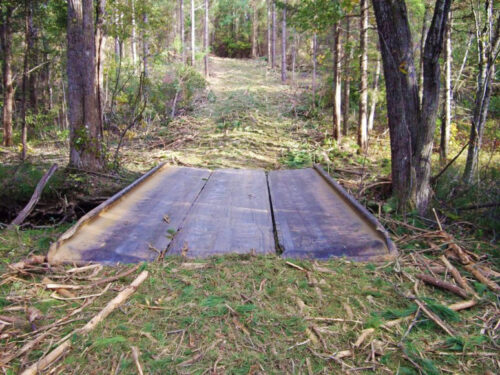
What is Nonpoint Source Pollution
Nonpoint source pollution is generated from land runoff resulting from precipitation. As runoff moves over land surfaces, it picks up and carries away natural and man-made pollutants and deposits them into waterways, wetlands, and groundwater. Human activity can dramatically increase nonpoint source pollution potential.
There can be five types of water pollutants resulting from silvicultural activities:
- Sediment
- Nutrients
- Organics
- Temperature
- Chemicals
Silvicultural activities that have the greatest chance of causing nonpoint source pollution include:
- Forest road construction, including stream crossings
- Forest harvesting activities, including skidding and processing timber
- Site preparation
- Pesticide application
- Wildfire control lines and prescribed fire use
Why Nonpoint Source Pollution is Important to Us
 Abundant clean water is important to all Virginians. Excessive runoff can increase sedimentation to streams. Increased sedimentation raises filtering costs for drinking water, increases flood potential by filling up streambeds, and chokes irrigation systems. Fish habitats can be altered by improper management activities. Removing shade from critical streamside areas can increase water temperatures thus affecting fish and other aquatic life. Best management practices (BMPs) can reduce the impact from these management activities.
Abundant clean water is important to all Virginians. Excessive runoff can increase sedimentation to streams. Increased sedimentation raises filtering costs for drinking water, increases flood potential by filling up streambeds, and chokes irrigation systems. Fish habitats can be altered by improper management activities. Removing shade from critical streamside areas can increase water temperatures thus affecting fish and other aquatic life. Best management practices (BMPs) can reduce the impact from these management activities.
Best Management Practices – What They are and Why They are Important
Best Management Practices (BMPs) are activities chosen to reduce soil erosion and prevent or control pollution resulting from forestry operations. BMPs have been around for many years in the areas of forestry, agriculture and urban development. Forestry BMPs are directed primarily at controlling erosion. Erosion can lead to sedimentation, which is the entry of soil into waterways. BMPs are proven methods to lessen the potential damage from land-disturbing activities.
VDOF Assistance
The VDOF is available to assist landowners and forest operators with harvest planning, BMP recommendations, and site restoration guidance. The Department also monitors BMP implementation on areas statewide to ensure that water quality is being protected through harvest inspections. We’re proud to report that we continue to see a high BMP implementation rate of 95% statewide.
VDOF developed a comprehensive Virginia’s Forestry Best Management Practices for Water Quality – Technical Guide and Field Guide that are both available in our Resource Library below.
Your local VDOF forest technician can advise about incorporating proper BMPs to protect water quality during the implementation of a forestry practice on your property. Your local VDOF water quality staff can also assist with technical BMP guidance.
Additional Resources
[posts_table columns="image,title:Title,cf:id_number:ID,content:Description,tax:Media,button" post_type="document-library" rows_per_page="5" exclude_term="Audiences:no, Media:news-releases" term="document-tags:best-management-practices" filters="tax:document-category:Select Category,tax:Media:Select Content Type" search_box="true" reset_button="true"]A variety of financial assistance programs are available through VDOF and partner agencies for forest management activities to protect water quality.
Explore All Financial Assistance Programs
Contact Us
Your local VDOF forest technician can advise about incorporating proper BMPs to protect water quality during the implementation of a forestry practice on your property. Your local VDOF water quality staff can also assist with technical BMP guidance. Contact your local VDOF staff.
For more information or questions, e-mail us or use our contact form.
